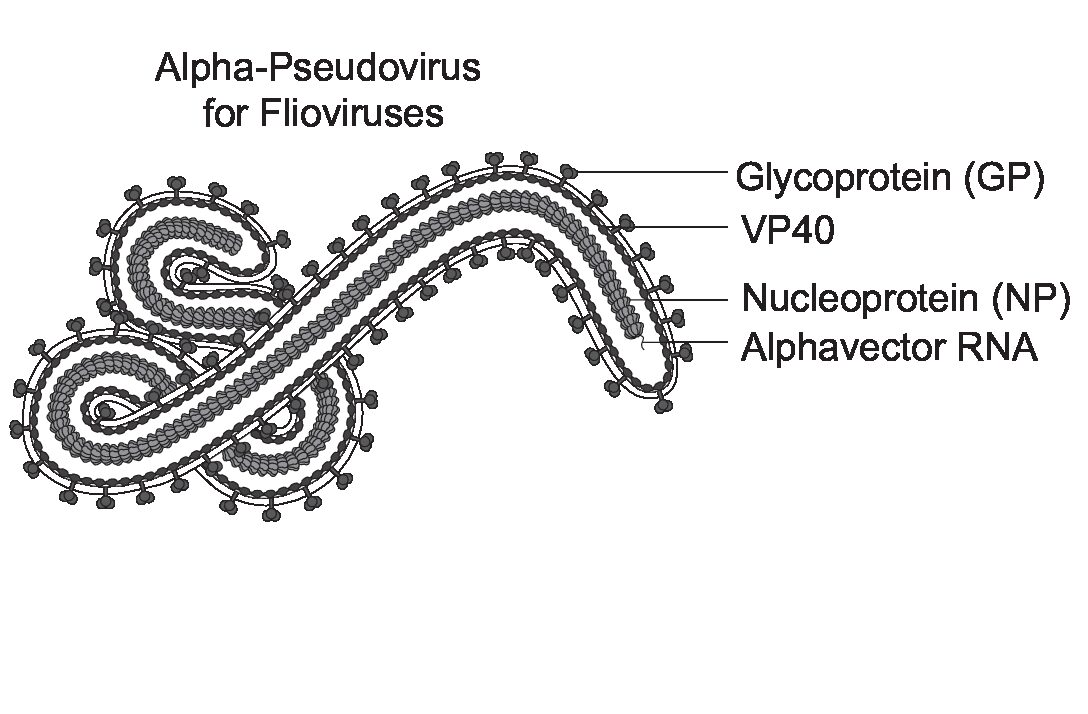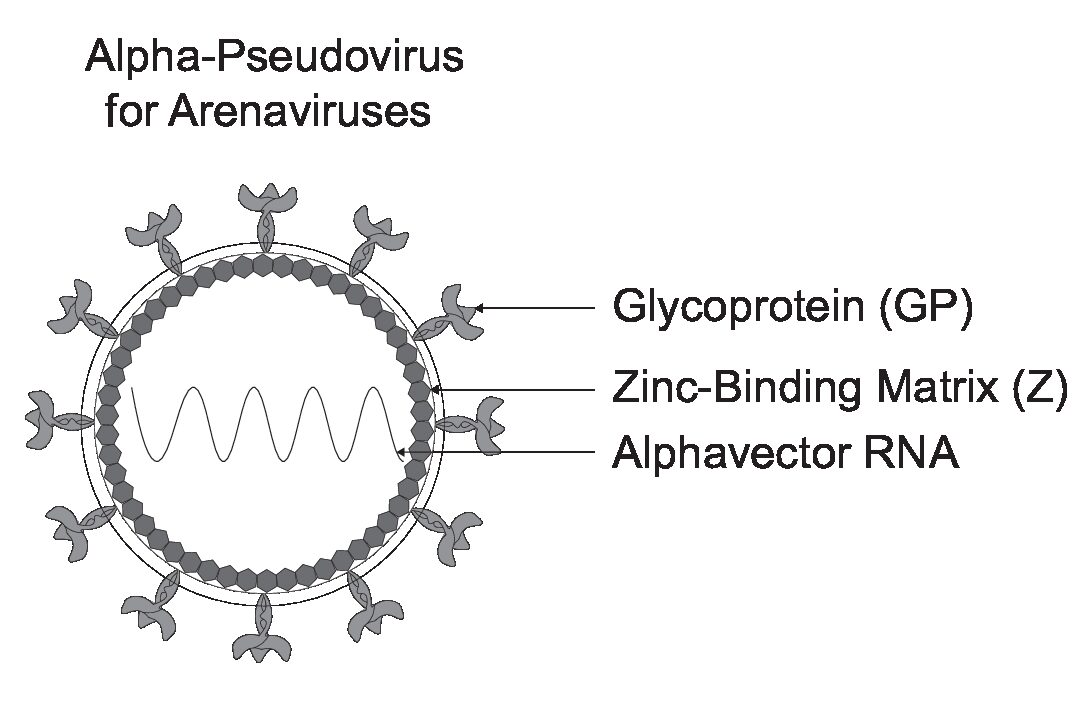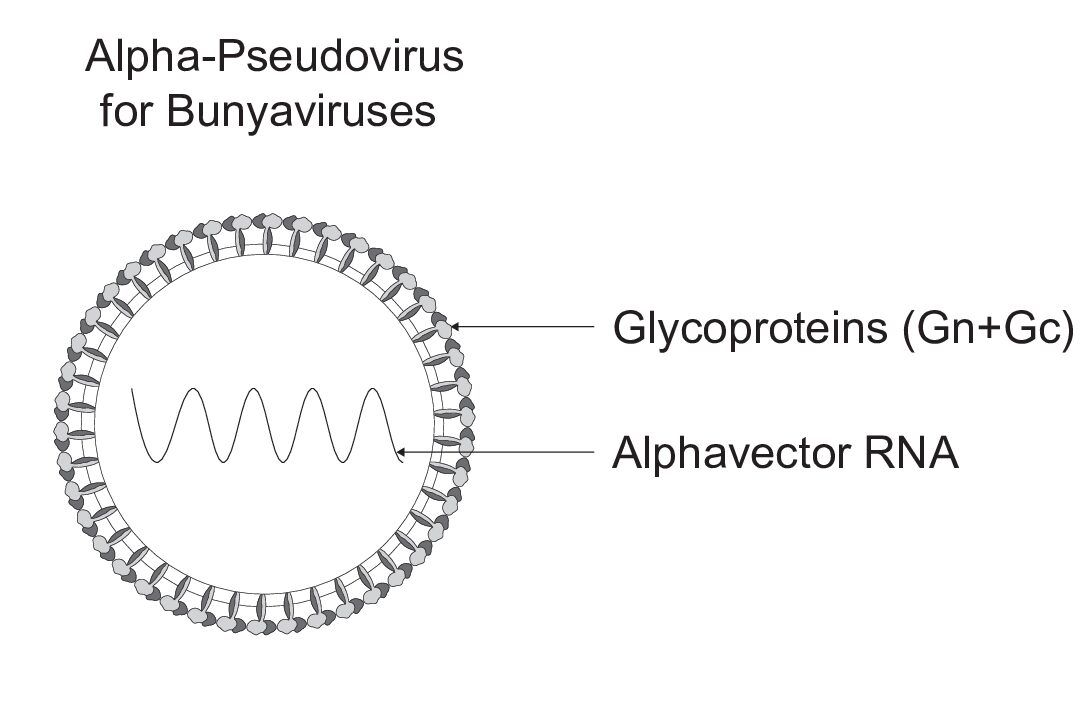Product Description
Product Description
Explore Highly Pathogenic Alphaviruses with Confidence:
Single-cycle alphaviruses
Discover our versatile pseudoviruses and single-cycle alphaviruses, purposefully designed to enhance your research capabilities in drug screenings, neutralizing antibody testing, and viral pathogenesis studies. These uniquely engineered viruses can be safely handled within BSL-2 laboratories, offering a secure and controlled environment for your investigations.
Built-to-order pseudoviruses for alphaviruses with the structural proteins of an alphavirus and a self-amplifying RNA genome
Eastern Equine Encephalitis Virus (EEEV) – Capsid (C), Envelope proteins E1, E2, E3 and 6K proteins with a self-amplifying BSL-2 safe VEEV RNA genome.
Chikungunya Virus (CHIKV) – Capsid (C), Envelope proteins E1, E2, E3 and 6K proteins with a self-amplifying BSL-2 safe SFV RNA genome.
Semliki Forest Virus (SFV)-Capsid (C), Envelope proteins E1, E2, E3 and 6K protein with a self-amplifying BSL-2 safe SFV RNA genome.
Applications
- Rapid alphaviral pseudovirus transduction of target cells for viral entry and functional studies
- Rapid Anti-VEEV, EEEV, CHIKV or SFV drug screening
- Rapid Anti-VEEV, EEEV, CHIKV or SFV neutralizing antibody screening
Made-to-order rapid pseudoviruses for alphaviruses; Venezuelan equine encephalitis virus (VEEV), Easter equine encephalitis virus (EEEV), Chikungunya virus (CHIKV), and Semliki Forest Virus (SFV) are now available at Virongy. The pseudovirus particles are assembled from the structural proteins of the alphavirus capsid (C), envelopes E1-E3 and the 6K proteins. These particles encapsulate an alphaviral vector for reporter gene expression. The alpha-pseudoviruses are single-cycle viruses with self-amplifying RNA for rapid quantification of neutralizing antibodies and entry-inhibiting drugs. These pseudoviruses are BSL-2 safe and ready to use for studying viral entry. Furthermore, we assist our customers in constructing the pseudoviruses at any scale.
For inquiries, please reach out to us via email: info@virongy.com
To enhance your pseudovirus entry, inquire about receiving a complimentary sample of our proprietary Infectin, which significantly enhances productive viral infection in various host cells, thereby boosting the viral infection rate by 3- to 20-fold.
Background:
Alphaviruses are single-stranded, positive-sense RNA viruses belonging to the Togaviridae family. They are responsible for causing worldwide outbreaks with significant morbidity. Alphaviruses are categorized into different groups based on their genetic relatedness and the clinical manifestations they produce.
Arthritogenic alphaviruses, including Chikungunya virus (CHIKV), Ross River virus (RRV), O’nyong’nyong virus (ONNV), Barmah Forest virus (BFV), Mayaro virus (MAYV), and Sindbis virus (SINV), are known to cause musculoskeletal disease characterized by symptoms such as fever, rash, arthralgia, myalgia, myositis, and acute and chronic polyarthritis.
Encephalitic alphaviruses, such as Eastern equine encephalitis virus (EEEV), Western equine encephalitis virus (WEEV), and Venezuelan equine encephalitis virus (VEEV), infect cells in the central nervous system, leading to meningitis and encephalitis. These infections often result in long-term debilitating neurological sequelae.
Alphaviruses are principally transmitted by Aedes, Culiseta, and Culex mosquito species, which facilitate their spread to a range of mammalian and avian hosts. Factors such as urbanization and climate change have influenced the geographical distribution of mosquito-borne alphaviruses, enabling their emergence and spread.
For example, CHIKV has caused large-scale epidemics in Africa, Southeast Asia, and the Americas. RRV and BFV are endemic in Australia, while MAYV is emerging in Central and South America. Encephalitic alphaviruses are of particular concern due to their potential to cause severe neurological disease and their ability to be used in biological warfare.
Despite the significant social and economic consequences of alphavirus outbreaks, no specific countermeasures currently exist to combat or prevent these infections. Ongoing research efforts focus on understanding alphavirus entry mechanisms and developing strategies for antibody-mediated protection. Technological advancements, including functional genomic screens and human monoclonal antibody isolation methods, and novel pseudoviruses have facilitated these research endeavors.
Documents
References
References
Kim, A.S., Diamond, M.S. A molecular understanding of alphavirus entry and antibody protection. Nat Rev Microbiol 21, 396–407 (2023). https://doi.org/10.1038/s41579-022-00825-7
Leung, J. Y. S., Ng, M. M. L., & Chu, J. J. H. (2011). Replication of alphaviruses: a review on the entry process of alphaviruses into cells. Advances in virology, 2011.
Gould EA, Coutard B, Malet H, Morin B, Jamal S, Weaver S, Gorbalenya A, Moureau G, Baronti C, Delogu I, Forrester N, Khasnatinov M, Gritsun T, de Lamballerie X, Canard B. Understanding the alphaviruses: recent research on important emerging pathogens and progress towards their control. Antiviral Res. 2010 Aug;87(2):111-24. doi: 10.1016/j.antiviral.2009.07.007. Epub 2009 Jul 16. PMID: 19616028; PMCID: PMC7114216.


 Alpha Pseudovirus – MSDS
Alpha Pseudovirus – MSDS




